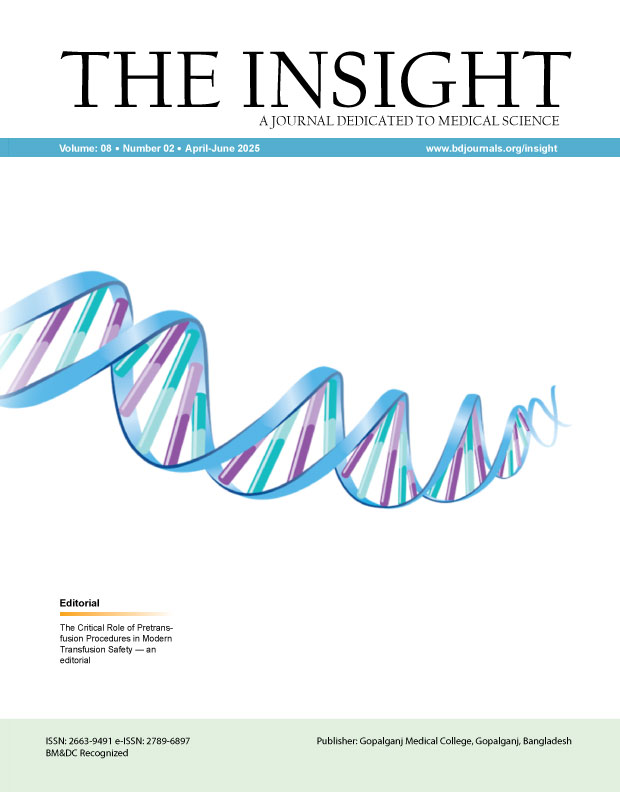Abstract
Background: Stroke is a leading cause of death and disability worldwide, with increasing prevalence in developing countries such as Bangladesh. Identification of demographic characteristics and modifiable risk factors is essential for prevention and management. This study aimed to evaluate the demographic profile and major risk factors among hospitalized stroke patients. Methods & Materials: An observational study was conducted among 100 stroke patients admitted to the Medicine and Neurology Departments of Dhaka Medical College Hospital, Dhaka, from July 2008 to December 2008. Patients presenting with acute or recurrent stroke were included, while those already on anti-lipid therapy or who declined participation were excluded. Data on demographics, occupation, medical history, and comorbid conditions were collected using a structured questionnaire. Results: The majority of patients (56%) were above 60 years of age, with a male-to-female ratio of 2.55:1, indicating male predominance. Occupationally, 86% were businessmen, teachers, service holders, or housewives. Among lifestyle and comorbid risk factors, 66% were smokers, 68% were hypertensive, and 28% were diabetic. Cardiovascular comorbidities included ischemic heart disease in 30% and valvular heart disease in 8% of patients. Conclusion: Stroke predominantly affects elderly males and is strongly associated with hypertension, smoking, and ischemic heart disease, with diabetes and valvular heart disease contributing to a lesser extent. Early identification and control of modifiable risk factors through lifestyle modification, regular screening, and public health interventions are essential to reduce the stroke burden in Bangladesh.

This work is licensed under a Creative Commons Attribution 4.0 International License.
Copyright (c) 2025 The Insight





 PDF
PDF